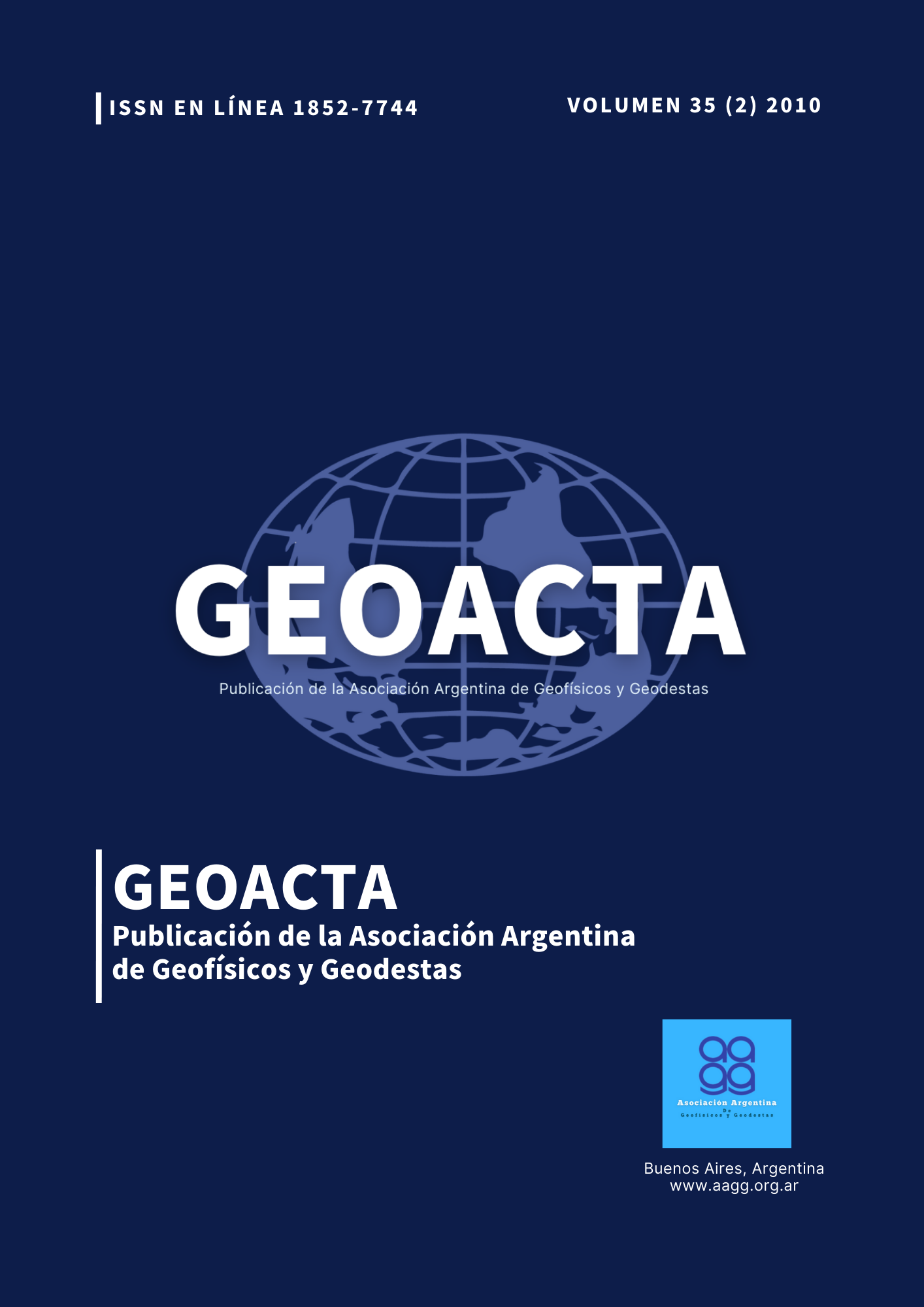Caracterización geosísmica de un sector de traza de la Ruta Nº 40: Provincia de Santa Cruz - Argentina
Keywords:
Refraction seismics, rippability, geophones, grm, geoseismicsAbstract
With the purpose to characterize underground distinct quality terrain related to pavement project in Ruta Nacional Nº40, in Santa Cruz province, there were carried through a seismic refraction survey. The objective pursued was to calculate the rippability of subsoil beneath the road trace along 5000m extension, spanned in two sectors near among them. This determination permitted to assess blasting or ripper. The study area presents a typical steppe patagonian landscape with basaltic formations indicating old volcanism. At surface, fine to medium-coarse alluvial soil was observed detecting on occasions organic material and besides great basaltic rocks spreading somewhere. Fifty seismic arrays were performed, deployed linearly one after the other along the trace. At each one, five records were taken, symmetrically upon the array center. Geophones and shooting points were determined upon prior proofs tests and space availability. Generally array extension ranged among 25m and 100m, being 5m the geophone gap, allowing thus a great survey detail. The amount and distribution of shootings had for objective to calculate with utmost precision apparent velocities and their true ones derived; refractor inclinations and rock basement; assuring at least a 15m depth investigation. At the processing stage, first picking were determined, which were displayed versus geophones distances, i.e. time-distance or ‘dromocrone’ graphs. After calculating critical distances, apparent velocities, were estimated. Then, two interpretation methods were carried through: Intercept Time Method (ITM); and Generalized Reciprocal Method (GRM). With the latter, true velocities and depths beneath each geophone were calculated, and with the former, beneath each shot-point, extending so the determinations. The correlation with geologic data was performed using visual inspection and very scarce geologic information available. At last, seismic profiles were developed in separate form according to trace outreaching showing lateral and in-depth variations of compression wave velocity. In both survey areas, two well different layers were detected, being the first a thin sand-muddy alluvial fill-up and the inferior, altered rock (basalt) (Zone 1); or compact alluvial terrain, wet to saturated. Information supported by geoseismic refraction method using GRM with 5 emission points defined with confidence and resolution the layers beneath the RN Nº40 trace along the sectors considered. Besides, lateral resolution of this method made possible to detect with precision lateral velocitythickness changes, of utmost importance when determining rippability.
Downloads
References
Ewing M., Woollard G.P. and Vine A.C., 1939. Geophysical investigations in the emerged and submerged Atlantic coastal plain. Part 3: Barnegat Bay, New Jersey section. GSA Bulletin 50, 257- 296.
Heiland, C.A. 1940 Geophysical Exploration. Prentice Hall. NY.
Palmer D., 1980. The Generalized Reciprocal Method of Seismic Refraction Interpretation. Society of Exploration Geophysicists, Tulsa, OK.
Palmer, D., 1981. An Introduction to the generalized reciprocal method of seismic refraction interpretation, Geophysics 46, 1508-1518.
Santamarina, J.C.; Klein, K.A. & Fam, M.A. 2001 ‘Soils and Waves’. Wiley & Sons. Ltd. England.
Downloads
Published
How to Cite
Issue
Section
License
Copyright (c) 2010 Armando Luis Imhof, Gerardo Oscar Fanton

This work is licensed under a Creative Commons Attribution-NonCommercial-ShareAlike 4.0 International License.
Starting in 2022 (Vol. 43 number 2) articles will be published in the journal under a Creative Commons Attribution-NonCommercial-ShareAlike 4.0 International license (CC BY-NC-SA 4.0)
According to these terms, the material can be shared (copied and redistributed in any medium or format) and adapted (remixed, transformed and created from the material another work), provided that a) the authorship and the original source of its publication (journal and URL of the work), b) is not used for commercial purposes and c) the same license terms are maintained.
Prior to this date the articles were published in the journal under a Creative Commons Attribution license (CC BY)
In both cases, the acceptance of the originals by the journal implies the non-exclusive assignment of the economic rights of the authors in favor of the editor, who allows reuse, after editing (postprint), under the license that corresponds according to the edition.
Such assignment means, on the one hand, that after its publication (postprint) in the GEOACTA Magazine of the Association of Geophysicists and Geodesists, the authors can publish their work in any language, medium and format (in such cases, it is requested that it be recorded that the material was originally published in this journal); on the other, the authorization of the authors for the work to be harvested by SEDICI, the institutional repository of the National University of La Plata, and to be disseminated in the databases that the editorial team considers appropriate to increase visibility. of the publication and its authors.
Likewise, the journal encourages the authors so that after their publication in the Journal of the Association of Geophysicists and Geodesists, they deposit their productions in other institutional and thematic repositories, under the principle that offering society scientific production and Unrestricted academic scholarship contributes to a greater exchange of global knowledge.
















